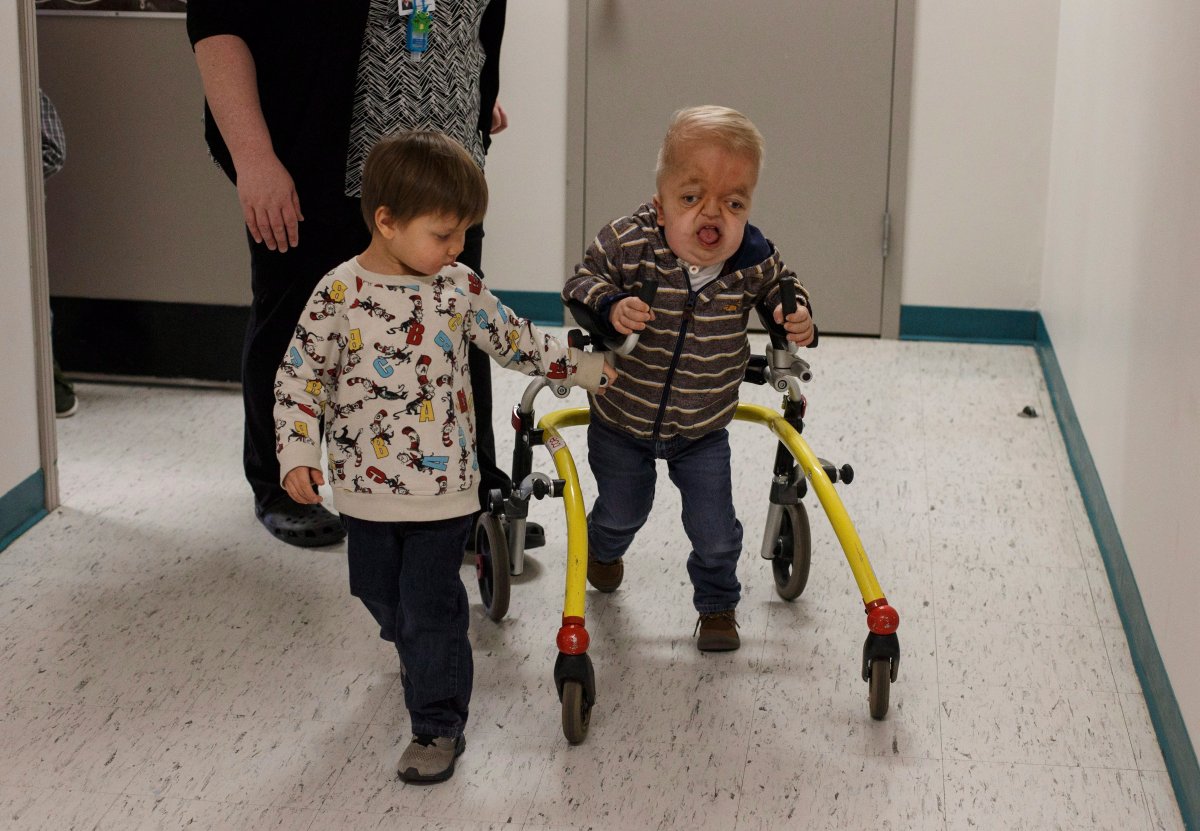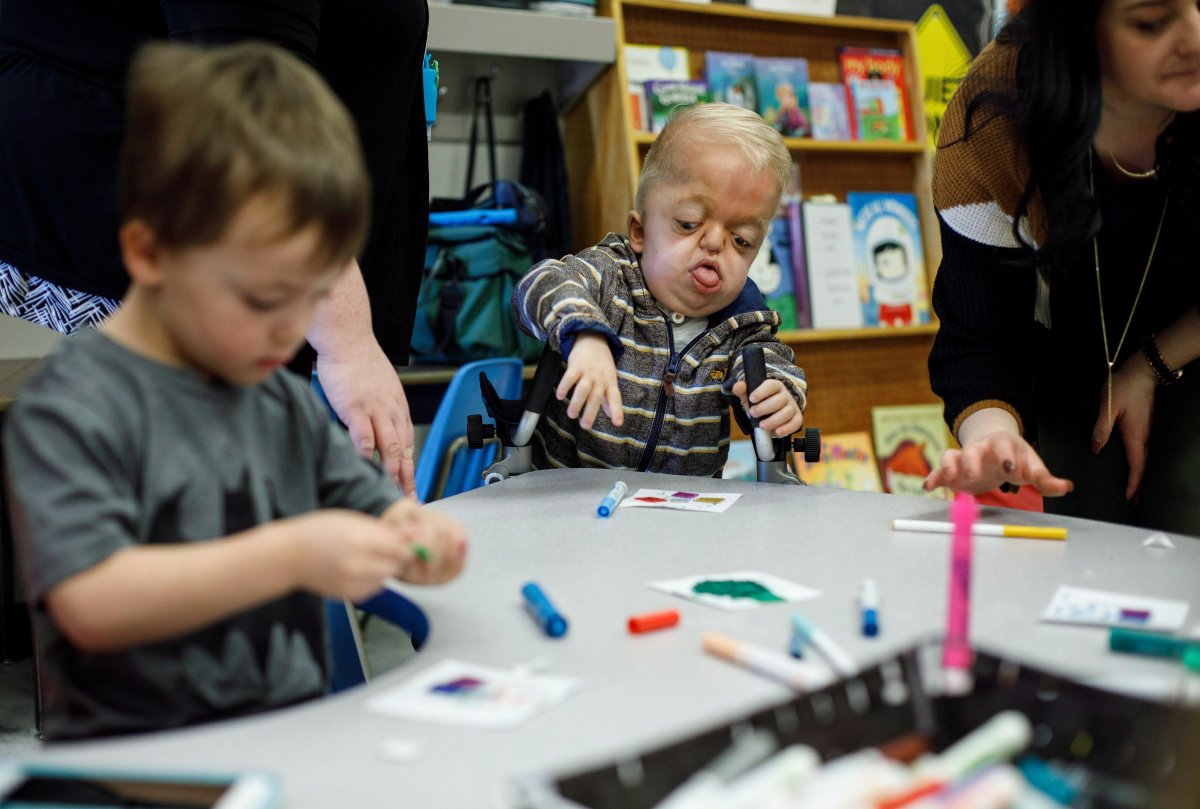Four-year-old Porter Stanley has some new pals at preschool. Russ stands beside him as they manoeuvre toy cars down and around a plastic parking garage. The newest kid in class, Mimi, offers her hand, patiently waiting for Porter to give her a high- five.

They soon sit on a large carpet for circle time and belt out songs about a bumblebee, the weather and monkeys.
Porter isn’t able to sing or speak, but claps his hands together with the help of an aide. His mouth turns up into a quick smile as a portable suction machine buzzes in the background.
Porter is one of about 30 people ever in the world to have a reported diagnosis of Beare-Stevenson syndrome, a condition that caused the bone plates in his skull to fuse together before he was born.
Doctors told his parents he would probably only live a few months. But after 10 surgeries and two years of medical ups and downs, Porter is doing well. He’s a big brother, an Edmonton Oilers hockey fan and loves watching “Paw Patrol.”
READ MORE: ‘You don’t plan for grief of this kind’: father of baby who died of aHUS speaks for first time
And now he’s going to preschool.
“It’s just opened up an entire world for him that he loves and he was missing out on,” his mother, Corine Stanley, explains after dropping Porter off with his new astronaut backpack at preschool in Onoway, a small town northwest of Edmonton.

Get daily National news
She says that when Porter started in the fall, she wondered how best to introduce him to his class.
Porter’s head and face are misshapen. He uses a walker to get around. There’s a tracheotomy hole in his throat that helps him breathe, but leaves him only able to communicate by touching pictures on a computer tablet.
His classmates watched a video about how Porter’s suction machine is used to clear his airway. And they listened to their teacher read a book about being different.
In the end, Stanley says, Porter starting school was as normal as it could be.
“He rolled in the first day and the kids were like, ‘OK, no big deal … Are we going to play or what’s going on here?’
“They treat him like any other little boy. Because he is.”
Instructor Vivian McDonald says Porter has the most medical challenges of any student. But his classmates have figured out that they have much in common.
“It really shows that everyone can fit into the world and that we can respect our differences.”
Porter’s pediatrician, Dr. Rehana Chatur, says she’s amazed by his progress.
“If you were to ask any of us initially when Porter was born if he would be walking and in preschool, I don’t think any of us would have predicted that,” she says.
At the Stollery Children’s Hospital in Edmonton, where Porter has been featured in an ad campaign, Chatur regularly sees posters of his face and hears people talking about his appearance. She calls him a great ambassador.
Chatur explains that the soft spot on top of a baby’s head allows room for the brain to grow and usually closes up by 14 months of age. In Porter’s case, parts of his skull had to be taken apart and pieced back together and shunts were also used to relieve pressure as his brain developed.
Because of the way his skull was fused, parts of the brain that control balance and breathing still fit tightly at the base of his skull, causing his developmental delays.
Porter was Chatur’s first Beare-Stevenson patient. And remarkably, considering the small number of cases in the world, she now has a second patient with the diagnosis. Chatur says she can’t reveal details other than the patient is a little girl.
READ MORE: ‘What’s wrong with Wyatt?’ Canadian docs treat baby with rare disease
Most children with Beare-Stevenson live only a few months or until about age two, says Chatur. The oldest recorded patient with the syndrome was 13.
The plan is for Porter to start kindergarten next year, says his mother. And because his hometown is small, he’ll continue on with the same group of friends.
Socialization is important for his development and self-esteem, adds Chatur.
And, in the end, Porter may be the one who is the teacher.
“It’s important for kids to learn things like tolerance and patience and how to be inclusive,” Chatur says.
“I think he’s teaching a lot of people, both kids and adults.”




























Comments